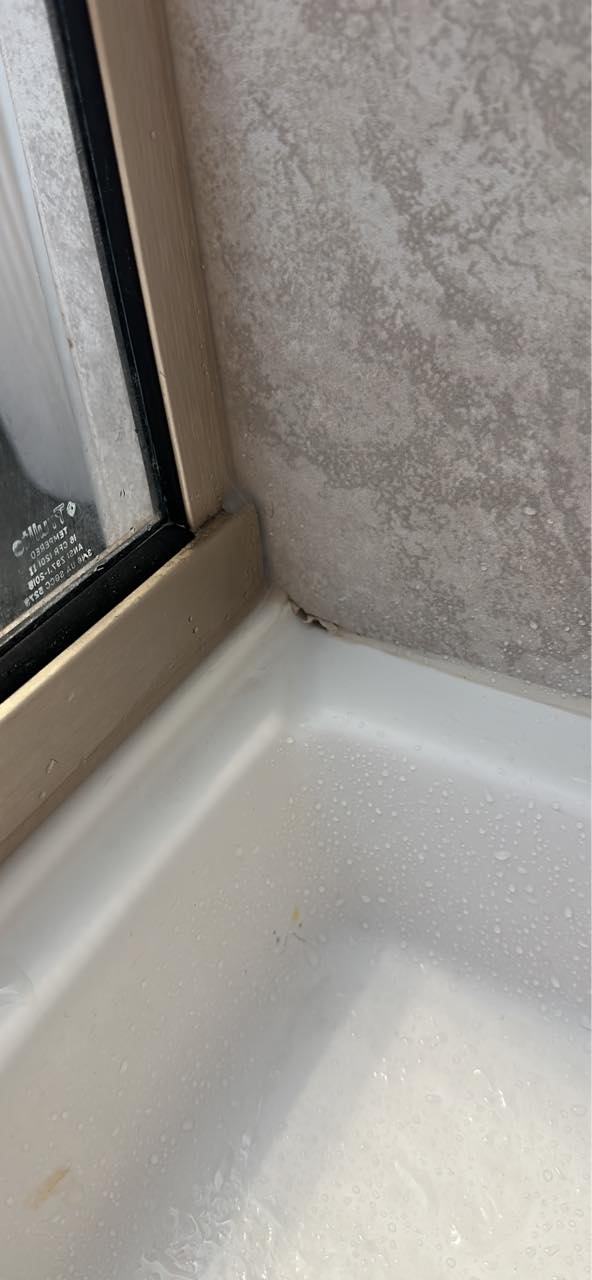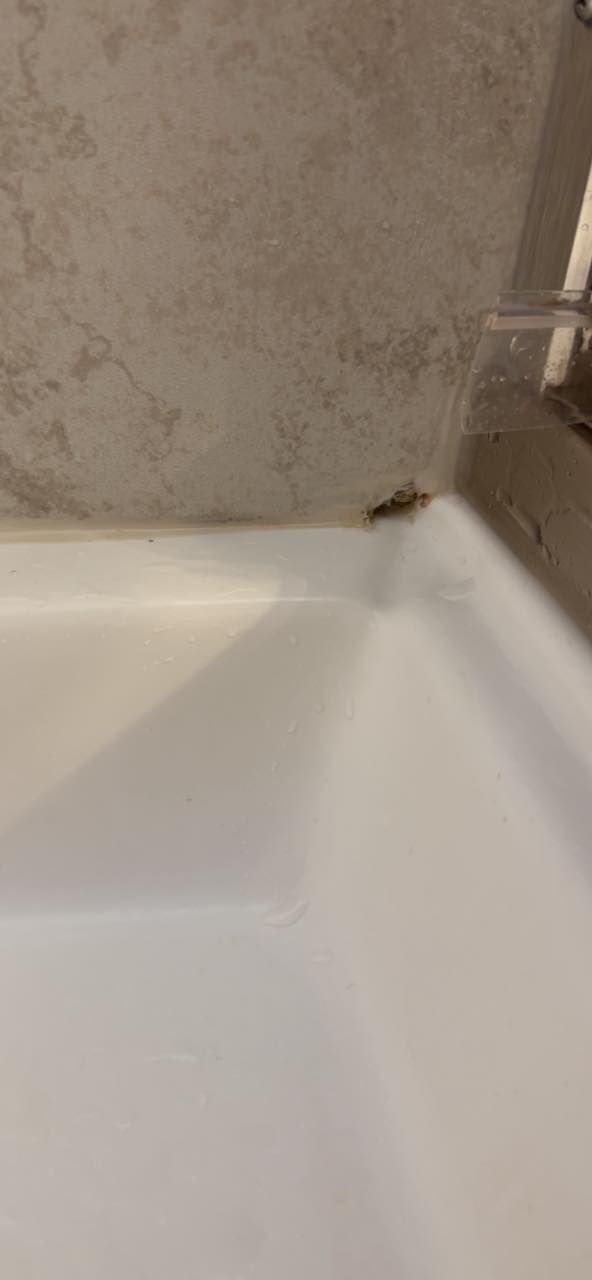Should I caulk the weird drain holes in the corners of my new construction shower, or is there another solution?
8 months ago
Last Updated: October 16, 2024
Just got a new house built, and I noticed some strange drain-like holes in the corners of the shower. Do you think I should caulk them up? Any advice would be appreciated. Thanks!




As a plumber, I can confirm that they are drains. Sealing them would cause the water behind the tile to drain into the walls instead of the pan. Almost every fiberglass tub or pan has these fixtures.
Has been around plenty of bathrooms, and I have never come across this before. The key is to prevent water from getting behind the tiles, as they can fall off and lead to mold and rot in your walls. So, why in the world would a builder include this in a house?
That’s strange. I frequently install tubs and pans in new homes several times a week, and they all include them. When I’m working on trimming a house next, I can share some photos of the completed projects with you.
So essentially setting up a shower for future issues and costly replacements? I’d be interested in inspecting the behind-the-tile work to ensure watertight walls…
I hear you, but it’s tough to prevent water (moisture) from seeping behind tile and grout since they’re not waterproof. The goal is to establish a waterproof barrier behind the tile.
Totally agree with you, . I would have done a more professional job with the caulking, but those holes are intentional.
Hey , if that were true, then everyone would opt for kerdi showers and save some money.
Hey , what materials are you using for your showers? I personally like using cement board.
I’ve worked with cement board, green board, kerdi, and wedi. I prefer kerdi. The main goal is to keep water from seeping behind the tiles, not necessarily to construct showers with integrated drains… the waterproofing acts as a safety measure.
No content
I’ve used the complete kerdi systems, they’re good but a bit expensive. I’m considering trying goboard or guru in the future.
Makes a good point. Water can seep through grout, thinset, and certain ceramic tiles. That’s why waterproofing is crucial. Starting from the substrate, then waterproofing, followed by thinset and tile.
Ph Wylie, can you picture how showers managed to stay dry in the past without any waterproofing?
Is definitely more affordable now compared to when it was first released. It’s just my preferred choice for simplicity. Everyone has their favorite.
Found it super easy, for sure.
Clarified that this product is not meant to allow water behind your tile. Instead, it provides a place for drainage in case water does get behind the tile. Grout tends to allow some water to pass through, and this product helps drain it out.
Mentioned that the green board and d100’s were what lasted, although every one he tore out crumbled.
Ph Wylie I recently had my house built back in ’89, and it’s still in great condition. It’s sad how the level of craftsmanship and pride in house maintenance seems to have diminished over the years.
The groove helps with drainage, but it’s important to seal the wall around the tiles to prevent mold and decay.
Seems like water is seeping behind the tile and that’s their temporary solution.
I heard from a few construction managers that the building code was revised to require those openings to prevent mold and moisture buildup behind the tile.
Oh, these are the weep holes. If you want more info, just Google them!
Hey, check out those weepholes. Avoid caulking them, okay?
No content
They should be fine, as the wall tile is positioned above the bottom tray. Any water or condensation that infiltrates behind the tile can flow into the floor tray, considering that grout is not waterproof.
In my 1964 home, I had a tiled tub/shower without ‘weep holes’, and the tile was directly on standard drywall for over 50 years. Recently, I removed it and found absolutely no water damage. When done correctly, tiles and grout are completely waterproof. I just completed a kerdi and tile shower/tub project using the original cast iron tub, without any weep holes. The work was done by a professional tile installer.
It really does feel like a lost art these days, doesn’t it? I miss the times when taking pride in your work and ensuring quality were fundamental parts of the job.
Yeah, I totally get where you’re coming from.😔
When my wife and I were working on our remodel, we did pretty much everything ourselves except for the drywall, refinishing the wood floors, and the tile work. We decided to do it ourselves because all the contractors I hired in the past were overcharging and doing a half-hearted job. I ended up learning how to frame, plumb, do electrical wiring, lay flooring, and I even built the built-ins for my walk-in closet.🙂
That’s the issue with – everyone thinks they’re a contractor, but very few actually are.
Check out the real-life story of !
Is this specific to shower pans?
Yes, only use a fiberglass pan. If you don’t have one, you’re definitely going to have leaks.
They serve as weep holes. If both the plumber and tile workers did their jobs correctly, you might not need them. However, it might be wise to keep them since the tile installer saw fit to include them, possibly for a good reason.
Definitely weep holes are necessary. Some professionals recommend them, while others may argue against their importance. If there is moisture behind the walls, it could seep back through the grout and mortar when the shower is not in use.
I frequently construct showers and it’s best not to have weep holes in your shower!
If you’d like to avoid a mess, use acrylic caulk to caulk around the bottom tile.
If that’s meant to be a drain, then I must be a f22 super hornet
I really like checking on here because I work as a handyman maintenance tech. If I walked into a house and saw this, I would definitely caulk or fill it. But after reading some comments, it seems like I’d be mistaken. However, if the hole is intentional, they should’ve made an effort to make it look better.
If you take a closer look, you’ll see that the pan also has depressions in the same area. The pan extends about 1.5 inches up the wall behind the tile to prevent water from entering through those holes.
Nailed it. The caulking job in that area is pretty shoddy. It doesn’t need to be so large. Some people even use a small straw piece to caulk over or take a 1/16″ drill bit after the caulking has dried to create a hole with just a finger spin of the bit. O.P. ‘t annoy the builder, or they may not respond when you actually have a real issue. ‘t be that person!
Just think about the mold that could grow under those holes over time – no thanks, not for me.
Weep holes are not the most attractive, but they serve an important purpose. Water can seep behind the tile because the tile itself is not waterproof. In the past, weep holes were not necessary because walls were able to dry out. However, modern construction includes a layer of 100% water and vapor-proof plastic behind the tile, so water can get trapped without a weep hole. The water can penetrate through grout lines and wall openings.
Weep holes. Avoid sealing them with caulk.
Weep holes might be necessary in cases where there are voids behind the tile needing drainage. Houses with brick veneers typically have this feature…the brick does not directly touch the vapor barrier at the back. The tile adhesive is applied directly onto the water barrier (whether it’s Kerdi or Redguard on cement board). If the adhesive was correctly applied, there shouldn’t be any significant voids in it. If your tile installer intentionally created a drainage system with voids, that’s a red flag. Check out photos of professionally done tile installations. You won’t see any weep holes. However, if the layers were properly constructed without voids in the adhesive, having weep holes wouldn’t do any harm or offer any advantages. They would just appear unsightly.